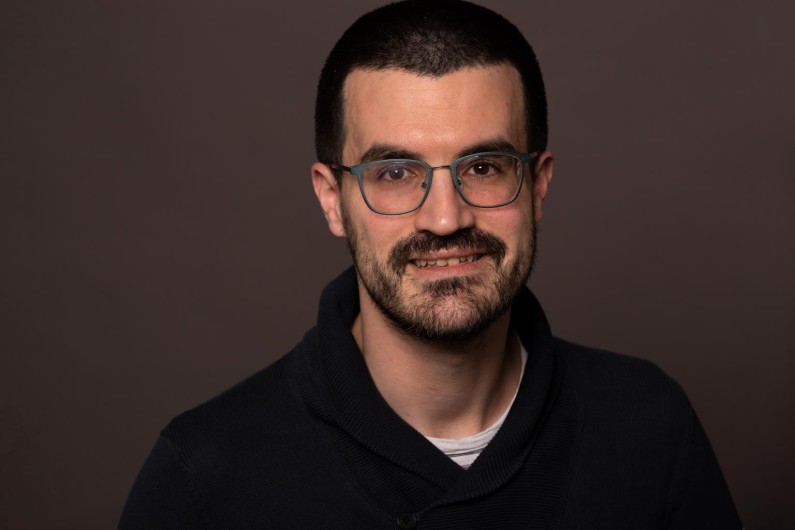Javier Fresán is awarded a CNRS bronze medal

There are many ways to do mathematics. The one that motivates Javier Fresán is to start with simple questions, relatively easy to explain to a neophyte, but which turn out to be rich and full of hidden structures when an educated eye looks at them. For this young Spanish researcher, who arrived in France as an Erasmus exchange student and has been a researcher at the Laurent Schwartz Mathematics Centre (CMLS*) at Ecole Polytechnique since 2017, the question concerns the numbers themselves: How do we know if a given number is 'transcendental'?
A transcendental number refers to a particular type of real number. Real numbers include those we use every day, such as positive and negative integers (0, 1, -2,...), fractions such as 1/4, or numbers like √2. These examples are not transcendental but "algebraic" because for each of them there is necessarily a polynomial with integer coefficients of which they are the zeros. For example, the number √2 is a zero of the polynomial x2-2 because (√2)2-2=0. But some numbers transgress this rule: the transcendental numbers. There is no polynomial with integer coefficients of which they are the zeros. The number Pi is the most famous example. These transcendental numbers are in fact the default. "If you take a random real number, it is likely to be transcendental," explains Javier Fresán. But beyond this probabilistic feature, how can we demonstrate that a given number is really transcendental or not? The question is relatively simple to ask, but still has no general answer.
The theory of periods
As is often the case in mathematics, this question branches out in many ways. "You have to start by asking what it means to be given a number," the researcher points out. There are basically two ways: a number can be seen as the sum of a series or as the value of an integral. The first case is in the field of mathematics which is called analysis; the second is in geometry, since integrals make it possible to calculate the area under a curve (in this case, a curve described by a polynomial algebraic equation, that of a circle for example). "The starting point for giving a geometric interpretation to a number is therefore to represent it as the particular value of an integral, which mathematicians call a period. Historically, this notion emerged to study the period of revolution of the planets or the time it takes a pendulum to return to its initial position," continues Javier Fresán. The number Pi can be written in period form because Pi is the area inside a circle whose radius is equal to 1. Generalised periods, which express the area under a curve described by the exponential function in addition to polynomials, give access to other transcendental numbers such as Euler's number. In particular, the mathematician has contributed to the study of the algebraic geometric structures behind these generalised periods. His work offers a new language for formulating the initial question : how to demonstrate that a number is transcendental.
A fortunate accident
There is still a long journey ahead of the researcher to get there. But along the way, he came across an old unresolved question. In a paper published in 1929, the mathematician Carl Siegel had introduced a new class of functions, the E-functions, which generalise the exponential, and proved theorems about the transcendence of the values of these functions. The question was whether these E-functions could all be constructed from other so-called "hypergeometric" functions. Despite several works on the subject, only the case of the simplest E-functions had been understood. Together with his collaborator Peter Jossen, whom he met during a postdoctoral fellowship at ETH Zürich (now at King's College London), Javier Fresán managed to answer the question posed by Siegel almost a century ago in the negative. Their result was published in the journal Annals of Mathematics at the end of 2021. "It's pretty amazing to have come across this old puzzle that we could tackle with our new tools. On top of that, the article was written and published very quickly, which adds to the exceptional nature of this accident," smiles Javier Fresán. He admits that he doubted the success of the project at the beginning, but he remembered a phrase attributed to the mathematician André Weil: " Optimists are the ones who prove theorems".
 Support l'X
Support l'X